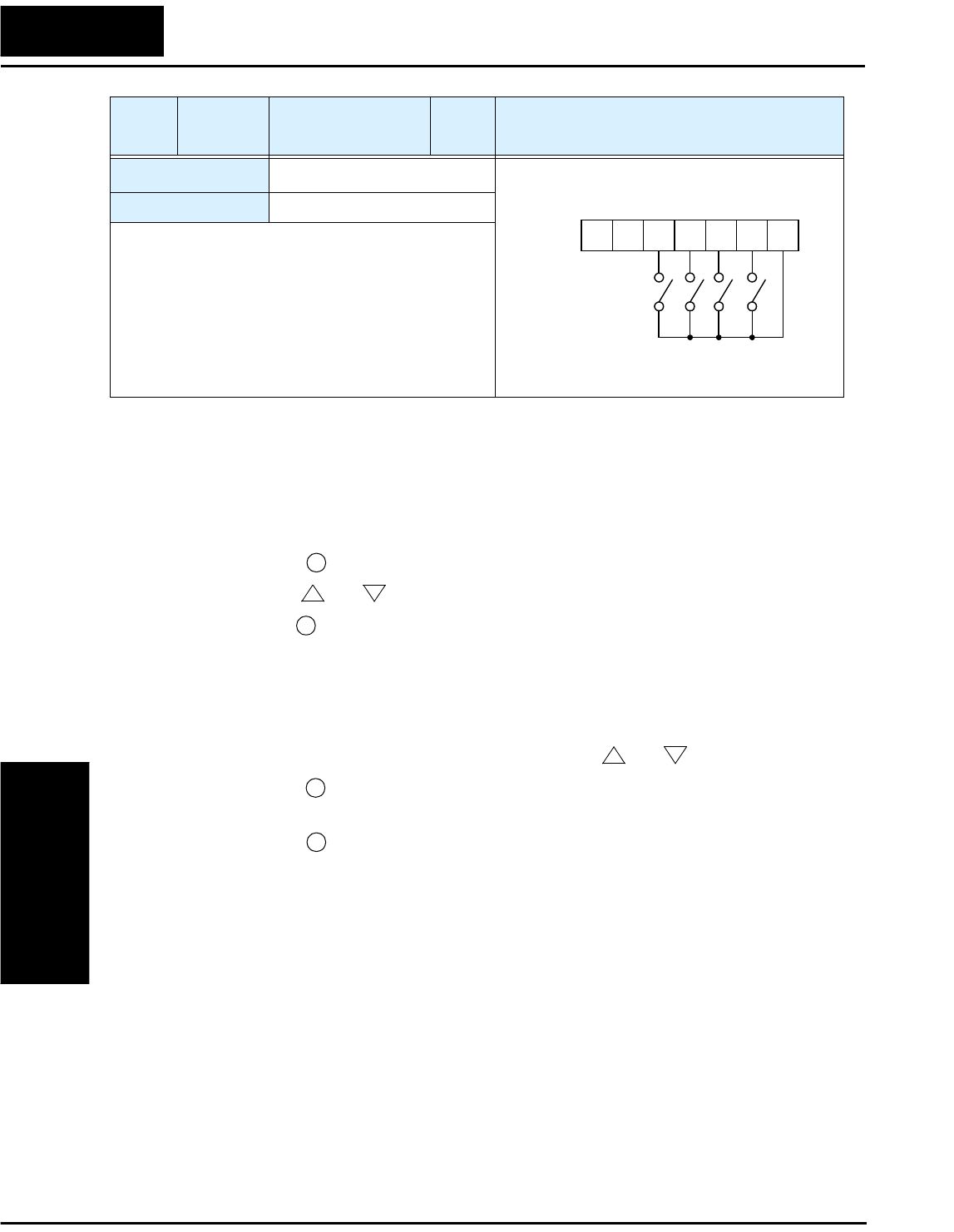
Using Intelligent Input Terminals
Operations
and Monitoring
4–8
While using the multi-speed capability, you can monitor the current frequency with
monitor function D01 during each segment of a multi-speed operation.
There are two ways to program the speeds into the registers A20 to A35:
1. Standard keypad programming:
a. Select each parameter A20 to A35.
b. Press the key to view the parameter value.
c. Use the and keys to edit the value.
d. Use the key to save the data to memory.
2. Programming using the CF switches. Set the speed by following these steps:
a. Turn the Run command off (Stop Mode).
b. Turn each switch on and set it to Multi-speed n. Display the data section of F01.
c. Set an optional output frequency by pressing the and keys.
d. Press the key once to store the set frequency. When this occurs, F01 indicates
the output frequency of Multi-speed n.
e. Press the key once to confirm that the indication is the same as the set
frequency.
f. When you repeat operations in 2. a) to 2. e), the frequency of Multi-speed n can
be set. It can be set also by parameters A20 to A35 in the first procedure 1. a) to
1. d).
Valid for inputs:
C01, C02, C03, C04, C05
Required settings:
F01, A20 to A35
Notes:
•
When programming the multi-speed settings, be
sure to press the Store key each time and then set
the next multi-speed setting. Note that when the
key is not pressed, no data will be set.
•
When a multi-speed setting more than 50Hz(60Hz)
is to be set, it is necessary to program the maximum
frequency A04 high enough to allow that speed.
Option
Code
Terminal
Symbol
Function Name
Input
State
Description
Example:
CF2
CF1CF4
CF3
(LSB)(MSB)
See I/O specs on page 4–5.
P24
123L 45
FUNC.
1
2
STR
1
2
STR
FUNC.
Technologies Inc.
Toll Free: voice: 1-877-539-2542 fax: 1-800-539-2542 www.mgitech.com
